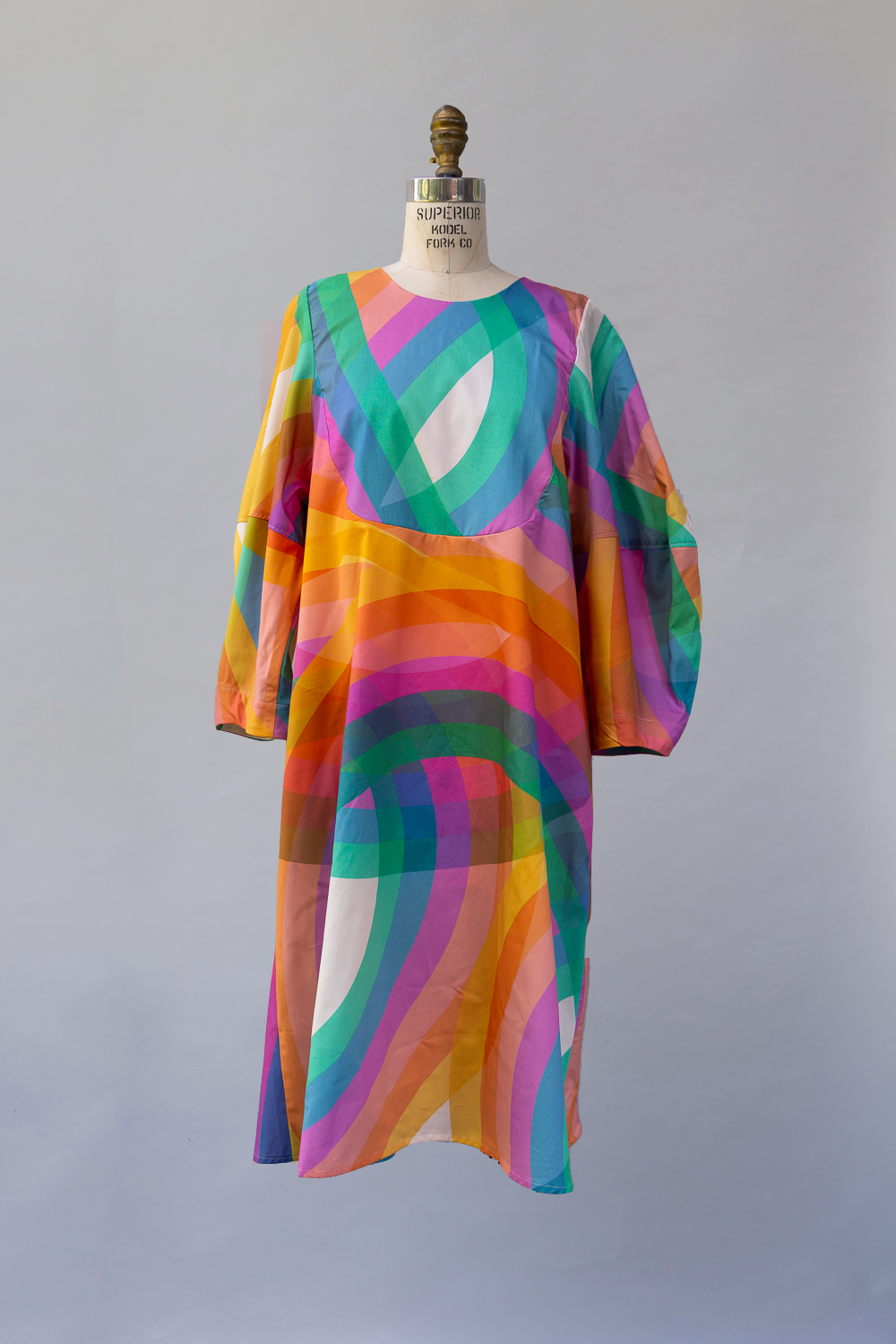rainbow print story
Our signature print represents light instead of pigment and pushes a digital print to its logical extreme.
the inspiration
Rainbow harkens back to the super graphics of the 1970s- thank the heavens for Barbara Stauffacher Solomon. The twists and turns of the rainbows wink at us, when is happiness a straightforward proposition?
Although this print is infused with nostalgia its outrageous scale and the full use of the spectrum could only be made now digitally. It uses pigment to explain light. Its transparency between layers of rainbows suggest luminosity instead of color.
Stauffacher Solomon for Sea Ranch.
our process
Our prints are concept driven and development may span several years. We build hardworking repeats and take no design shortcuts. We love prints and print history and embrace a research heavy, somewhat academic process.
in the wild
our prints

some history
Large scale prints are integral to muʻumuʻu and all aloha wear. How did this happen? There are a lot of apocryphal origin stories. One we particularly like is that Wong’s Drapery Shoppe helped create the aloha shirt for college bound Hawaiians going to the mainland. The students needed something both warm and that felt Hawaiian. Wong’s initially used thick Japanese upholstery fabric for the warmth so the large print scale became locked in as “Hawaiian.”
These prints represent the multicultural history of Hawaiʻi. They may refer to Japanese Kimono fabrics, European chintz florals, Indian paisleys, Indonesian batiks, and traditional kapa patterns. They may be designed “authentically” by a native Hawaiian, a kamaʻāina (a local), or a transplant to the islands. The authenticity comes from the knowledge, sense, and respect of place.
in the 1930s and 40s there was a concerted effort to create the modern Hawaiian print using local themes. This has been much lauded in Alfred Shaheen’s work. Also consider Elsie Das. Elsie Das was an American of Danish descent who went to art school in California. In 1950, the Honolulu Advertiser wrote “Elsie Das can lay close claim to being the originator of the aloha print.”
Her approach to print shows a sophistication and a worldliness at odds with the stereotypes about “isolated” Hawaiʻi. Compare her ulu print with the great 20th century print designer Josef Frank. The similarities indicate a deep understanding of print design and trends at the time.
Left: Elsie Das “Breadfruit,” Right: Josef Frank “Hawaii”
For more read: The Aloha Shirt: Spirit of the Islands, Dale Hope and Elsie Jensen Das, Peter Young.






















